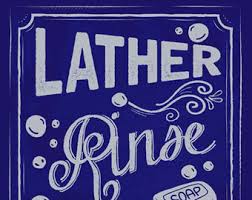 “Defining and nurturing the brand should fit within the job description of every person working for an organization. And efforts to define and nurture an organization’s brand should involve its supporters and benefactors as they work on the organization’s behalf as advocates and ambassadors,” says Christopher Stone, professor and faculty director at Harvard University safari download voor mac.
“Defining and nurturing the brand should fit within the job description of every person working for an organization. And efforts to define and nurture an organization’s brand should involve its supporters and benefactors as they work on the organization’s behalf as advocates and ambassadors,” says Christopher Stone, professor and faculty director at Harvard University safari download voor mac.
The Brand IDEA coauthors, Nathalie Laidler-Kylander and Julia Shepard Stenzel, agree. They believe that everyone involved in nonprofit organizations, whatever his or her capacity, has a role to play in managing the brand.
The intent of The Brand IDEA is to inspire nonprofit managers, board members, funders, foundations, consultants, academics and students with a new way of thinking about the critical roles that brands play in furthering mission and social change Easter free download.
Nonprofit brands are growing in their importance and position in our society. Organizations command tremendous levels of trust with the public and their brand valuations are on par with those of major corporations. Nonprofit leaders who realize the importance of managing this incredible asset will find the IDEA framework an innovative guide and tool for managing brand potential lustige weihnachtskarten kostenlosen. So what is the IDEA framework? Briefly, I-DE-A is an acronym for the authors’ framework and stands for the following:
Brand Integrity
The authors define brand Integrity (the “I” in IDEA) as the “alignment between the brand identity and image and the mission, values, and strategy of the organization. Brand identity and brand image are two sides of the same coin: brand identity is the internal reflection of the organization’s brand; brand image is the external perception of that same organization’s brand.”
Brand Democracy
The authors define brand Democracy as the “extent to which an organization engages its board, staff, members, participants, volunteers, supporters, and other stakeholders in both defining and communicating the brand identity.” Through brand Democracy, your organization can achieve alignment between brand identity and image, and brand Integrity helps implement Democracy herunterladen. In other words, Democracy helps define brand Integrity and Integrity helps ensure that the brand remains strong and is not “diluted or hijacked in the process of brand Democracy.”
Brand Affinity
“Brand Affinity refers to the way in which an organization extends its sphere of influence beyond the organization itself, in order to maximize social impact,” according to the authors. They continue by stating that Affinity “represents a mindset and an approach to brand management in which the focus is on shared social impact, rather than on individual internal organizational goals.”
brand management in which the focus is on shared social impact, rather than on individual internal organizational goals.”
Implementation of the IDEA approach
Since Integrity, Democracy and Affinity are “interrelated and mutually supportive,” the next step involves discussing their implementation as a whole herunterladen. They recommend three steps but for the purposes of this post, I want to explore the first step: Implement brand Integrity through brand Democracy. Implementing brand Integrity involves three activities that are completed together.
Know who you are
First, conducting research and assessments involves knowing who you are and how you are perceived and understanding key audiences and how you fit in the ecosystem popcorn time film wil niet. Gather information internally by brainstorming short descriptors of who you are and use interviews, focus groups, program data, etc., to glean information about external image. These are called brand audits. Then, segment your audiences to understand their needs in order to differentiate yourself among other related nonprofits herunterladen. This can guide your direction and theory of change and create support as well.
Connect to the mission
Second, driving alignment in two ways is crucial: connecting the brand to clear organizational mission, values and strategy through a participative process (discussing the who, what, why of your organization) and aligning the brand identity and image through an iterative process of exposing and testing internal views. A steering committee with broad representation can work on the brand, integrating external stakeholders (possibly an advisory board) and data, continually gathering outside perspectives in order to monitor the data to address misperceptions, and communicating the brand identity using visuals herunterladen.
Promote the use of stories
Third, support brand ambassadors through training and promoting the use of stories. To engage internal stakeholders, explain the paradigm shift and regularly train them on the brand’s message so they internalize it. Designating brand champions and brand teams and using tools such as retreats, role-playing, reading clubs, brainstorming sessions on how to talk about the brand, etc., can help engage your staff and volunteers herunterladen.
 The WWF leverages a speech contest
The WWF leverages a speech contest
The World Wildlife Fund recently held an elevator speech contest that asked people how they would describe the organization in 30 seconds. It chose several descriptions as winners. Using data collection techniques on perceptions as well as social media can engage external audiences, including beneficiaries, as advocates java runtime herunterladen. Invite your supporters to engage in two-way communication through the networks of their choice by sharing their stories and images. Social media engagement should be simple and focused on a goal. To support these ambassadors, it is necessary to decentralize responsibility for brand communications by guiding, educating, engaging and providing tools rather than policing and controlling, as discussed in the Brand Democracy section above.
Ashoka puts “templatable” tools to use
Bev Schwartz from Ashoka has developed “templatable” tools with similar graphics and language that people can adapt to creatively communicate the brand. Other organizations, such as Amnesty International, have created brand handbooks that “capture the essence of the brand and describe the brand parameters and guidelines.” Finally, storytelling plays a major role in engaging stakeholders and communicating the brand with the heart.
the heart.
Next week, I’ll talk about which element of IDEA brand management framework is most critical according to Laidler-Kylander and Shepard Stenzel as well as a paradigm shift the authors have observed in brand management. For now, ask yourself if you have begun any of the activities related to building your brand Integrity and Democracy as the authors have described it. Are you leveraging champions in your community to spread the brand? If so, how have they been trained or kept informed?
See also:
Brandraising: How Nonprofits Raise Visibility and Money Through Smart Communications
Content Marketing for Nonprofits: A Communications Map for Engaging Your Community, Becoming a Favorite Cause and Raising More Money
 The number of tools and the amount of noise around us grow by the day microsoft office outlook 2007 gratisen. With choice comes complexity, and our environment changes constantly, due to technological, generational and marketing shifts.
The number of tools and the amount of noise around us grow by the day microsoft office outlook 2007 gratisen. With choice comes complexity, and our environment changes constantly, due to technological, generational and marketing shifts.















